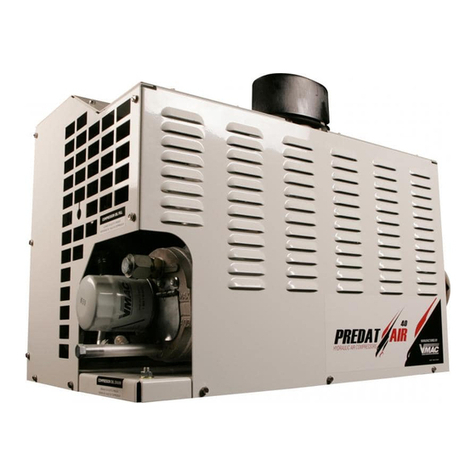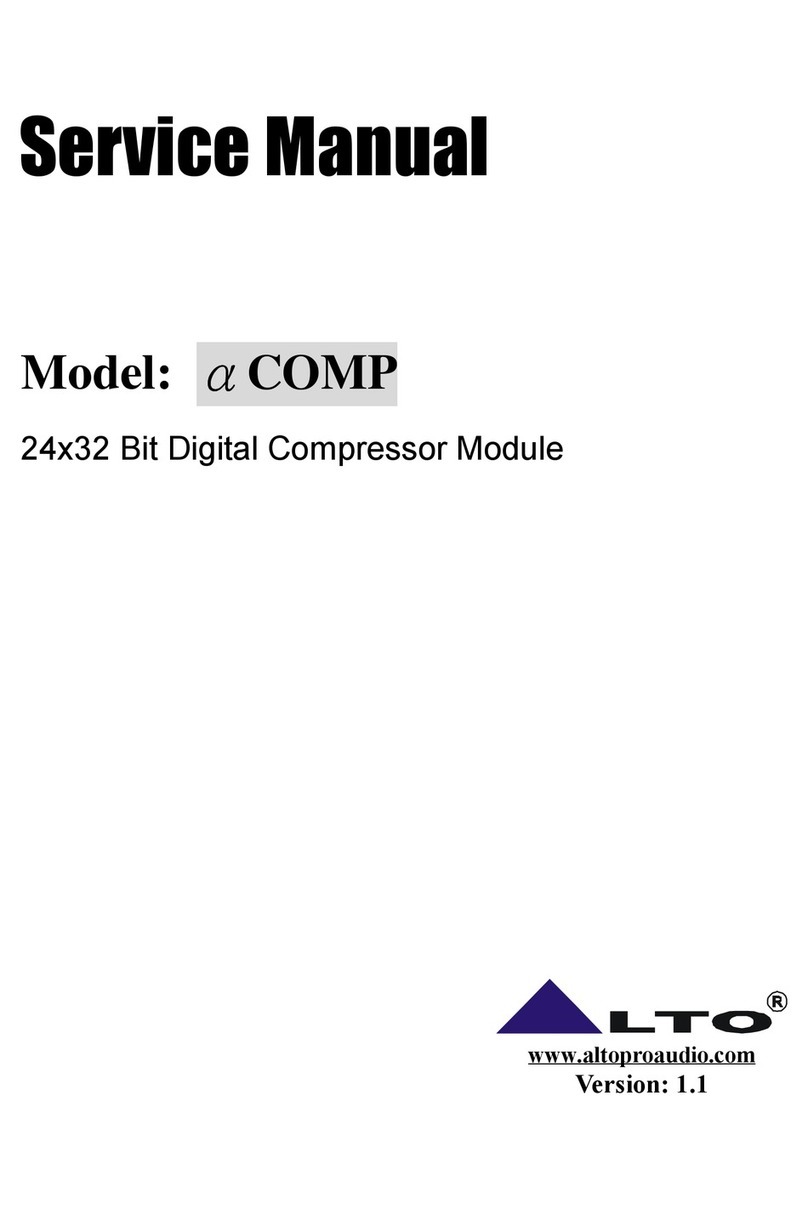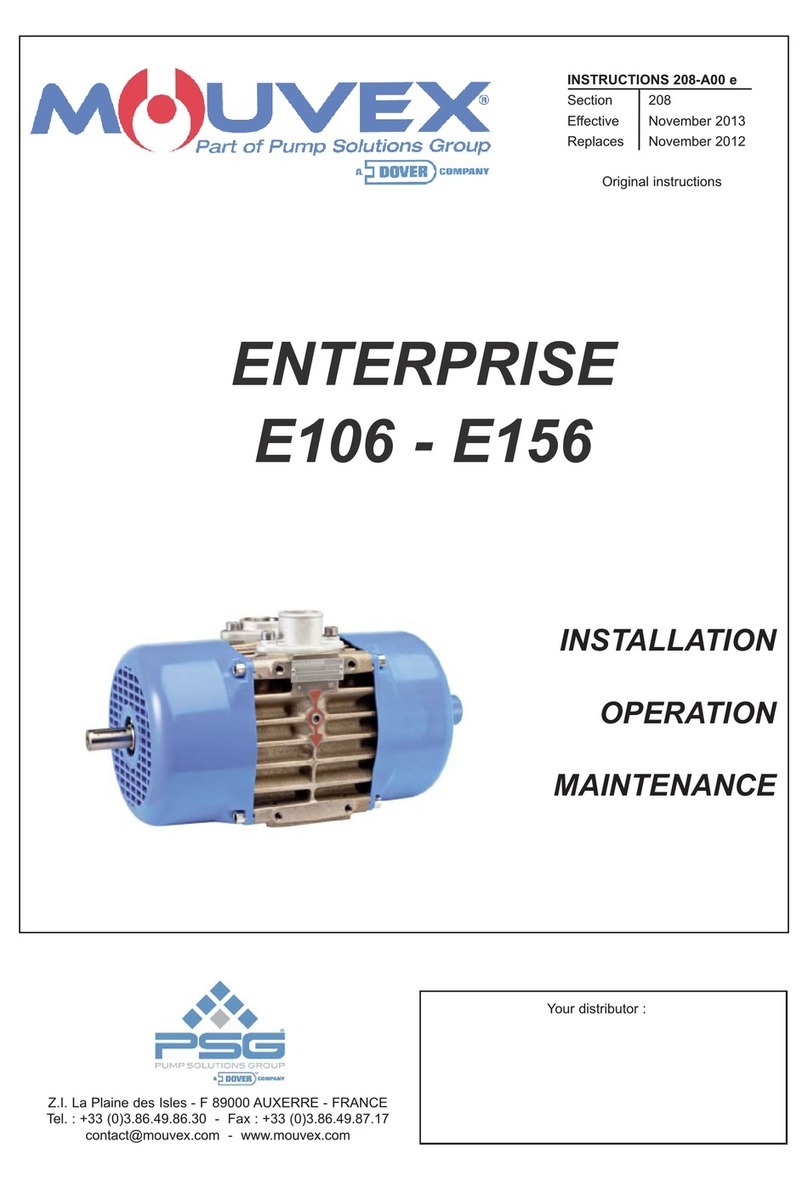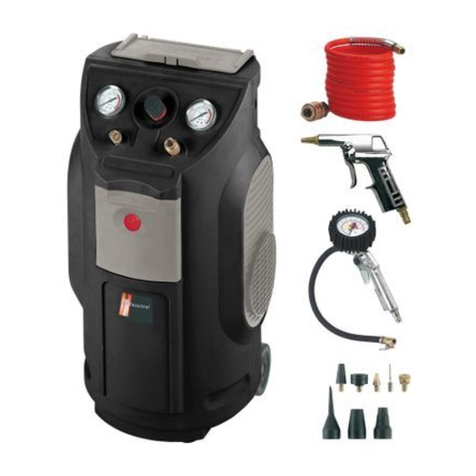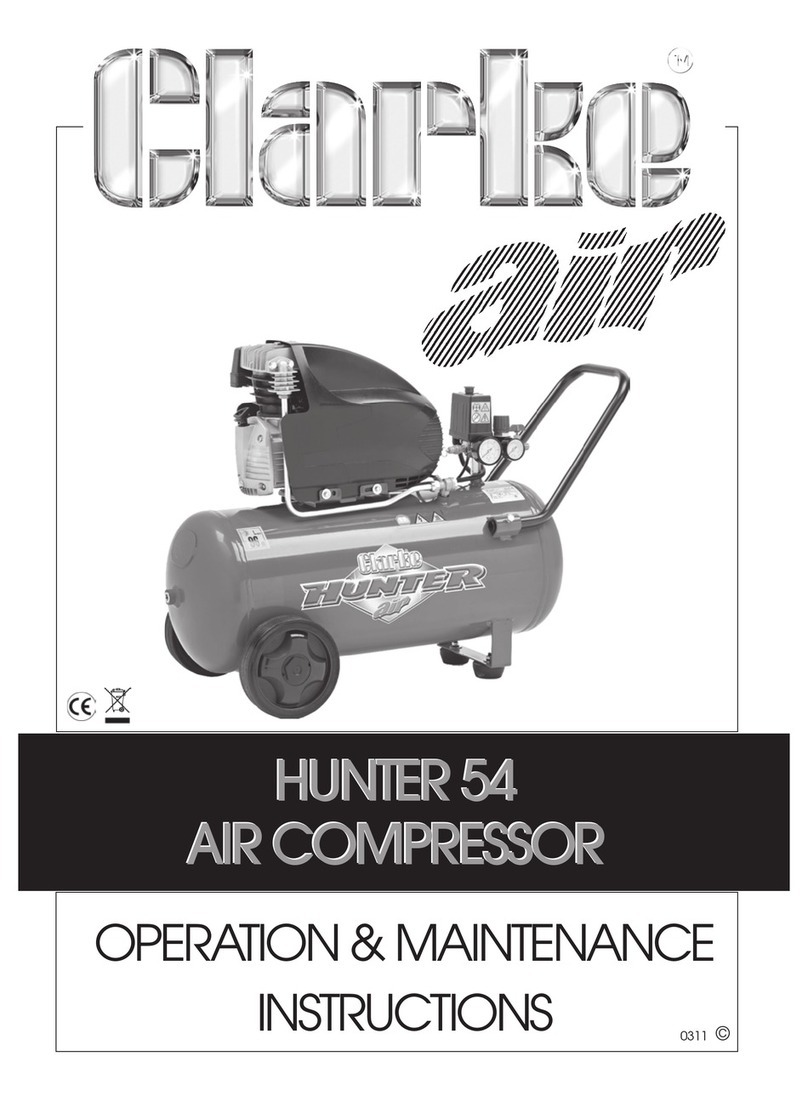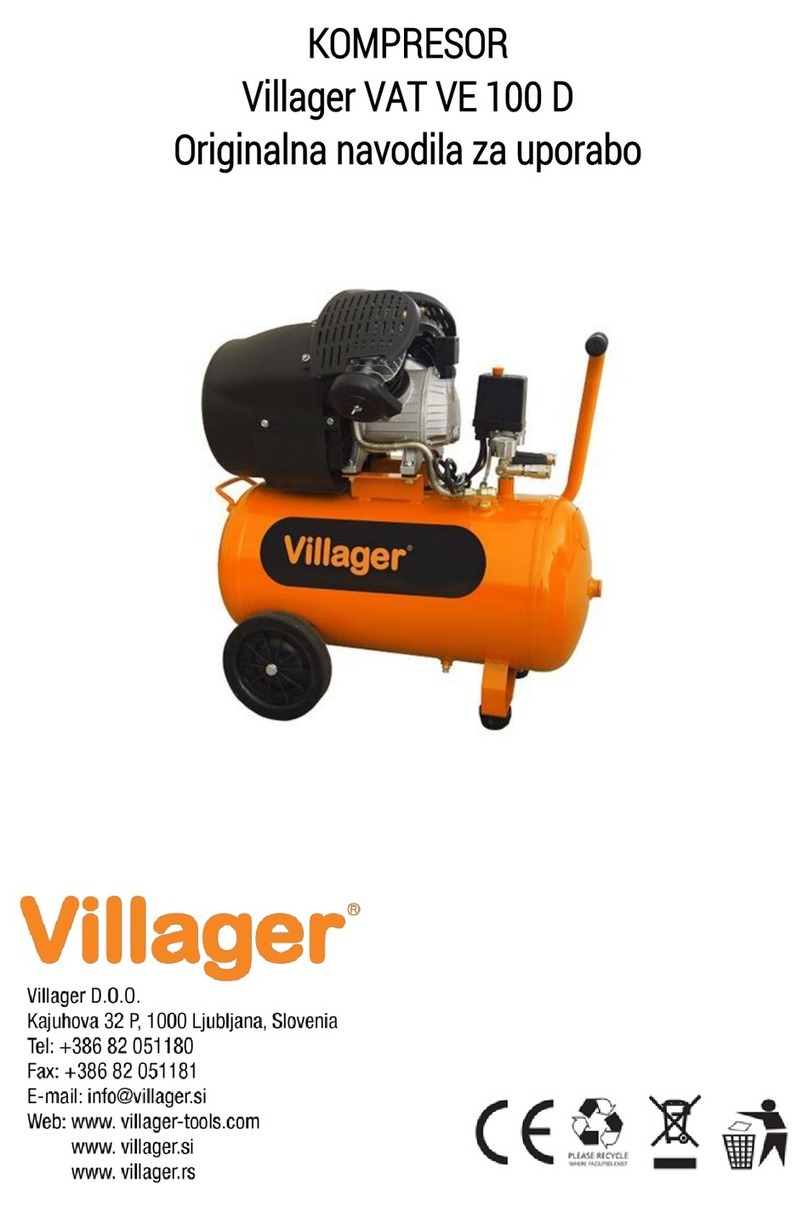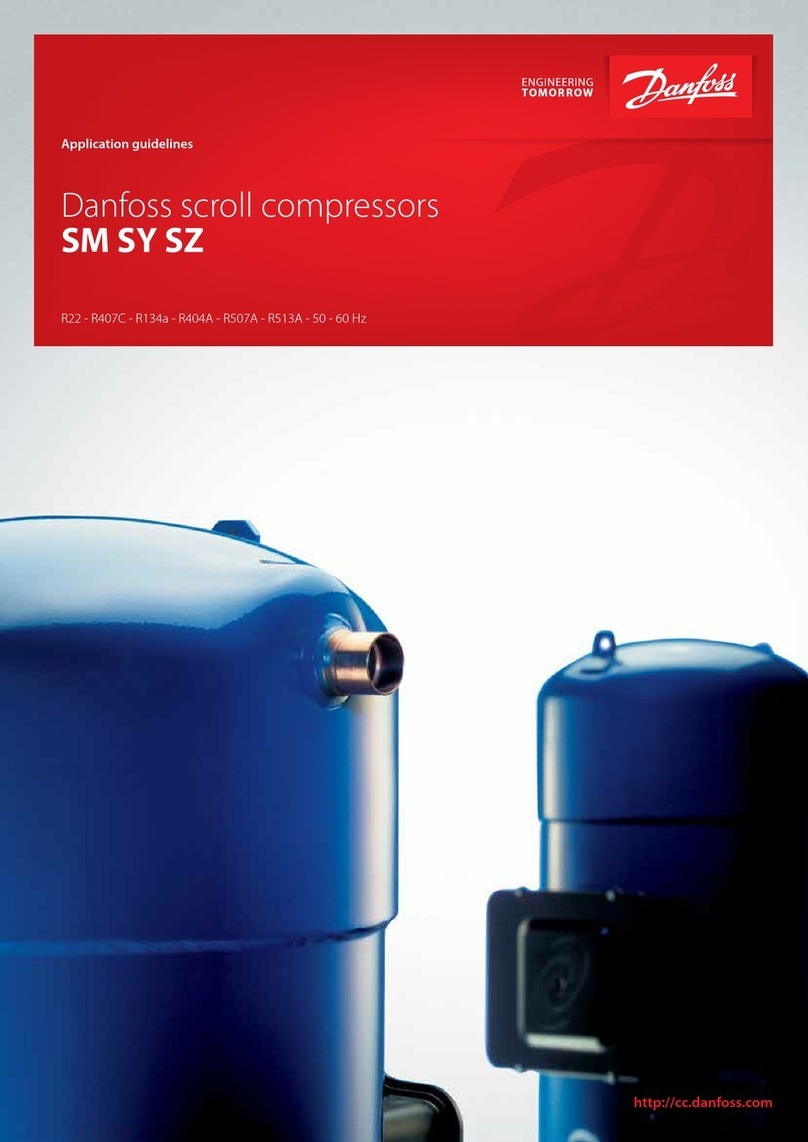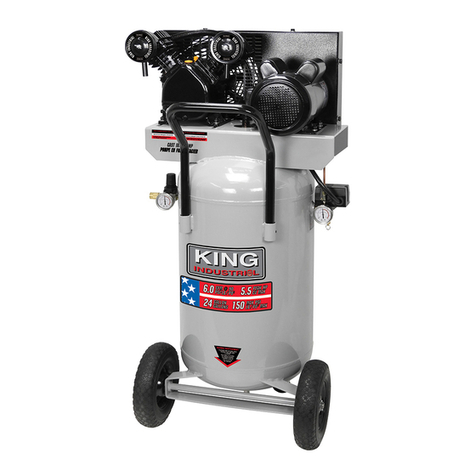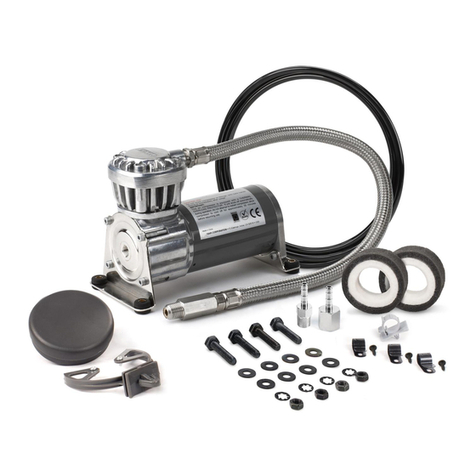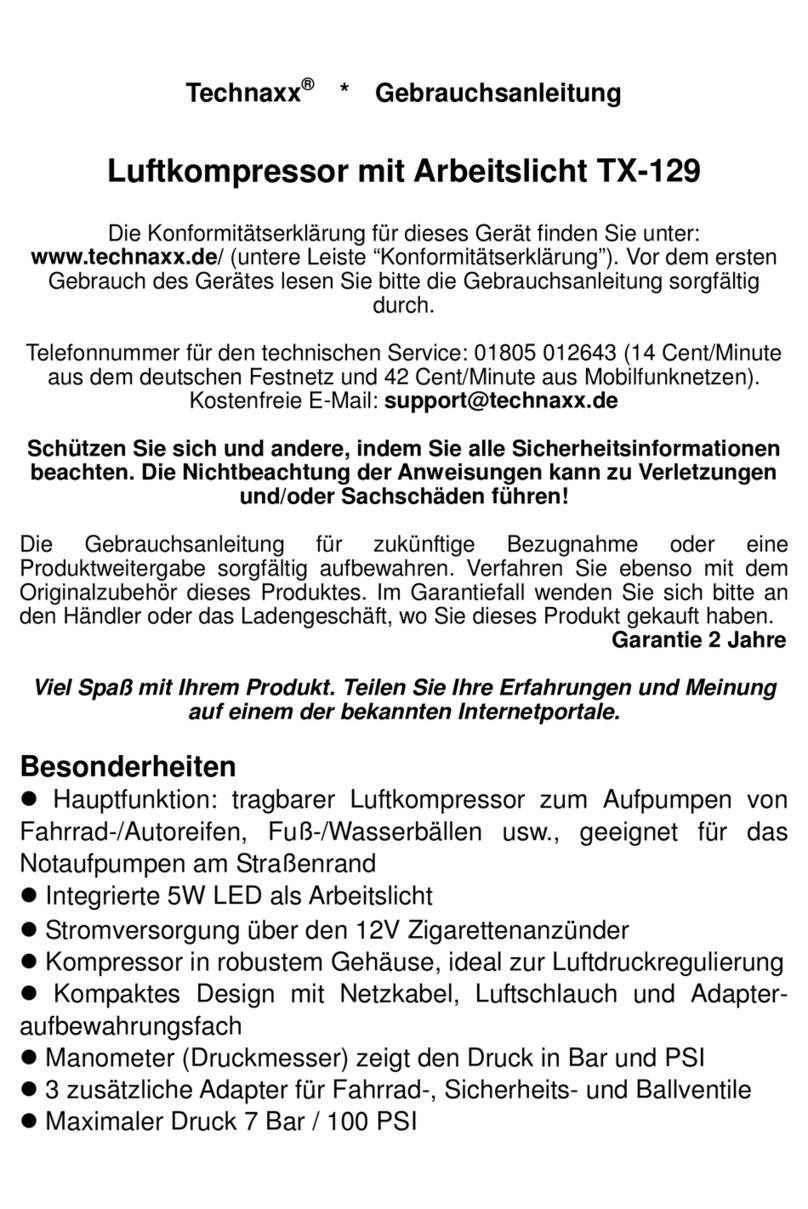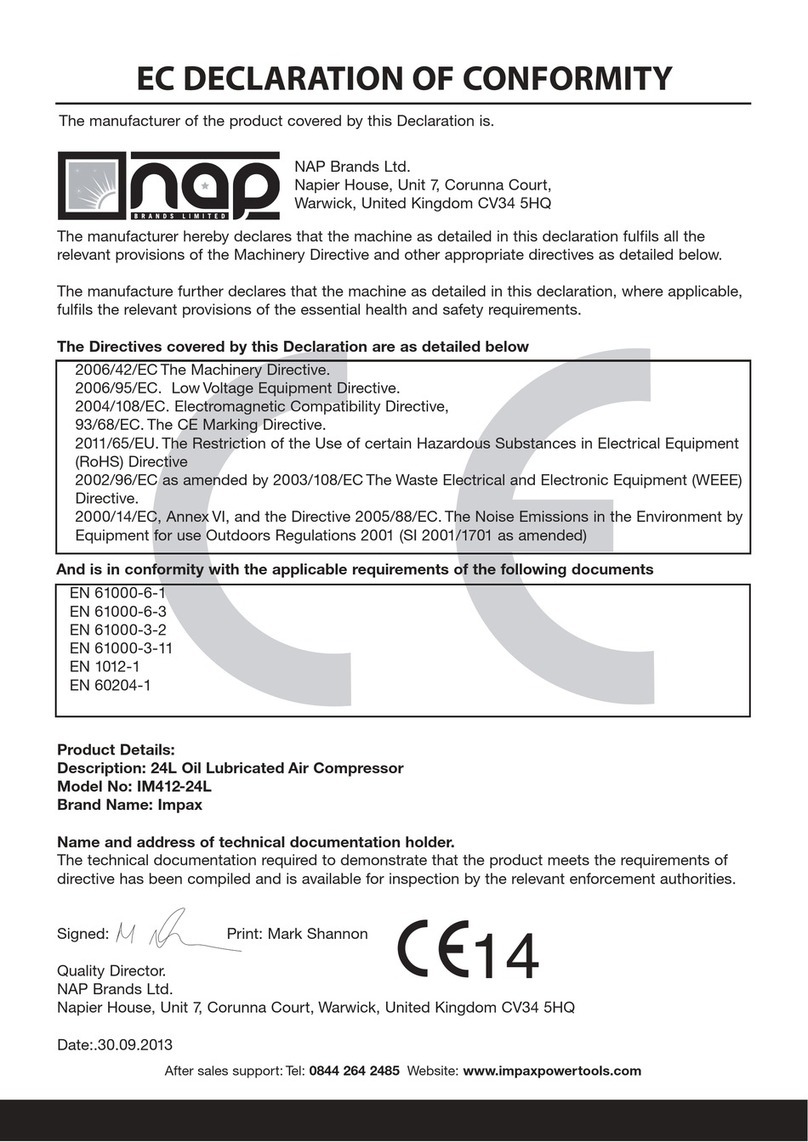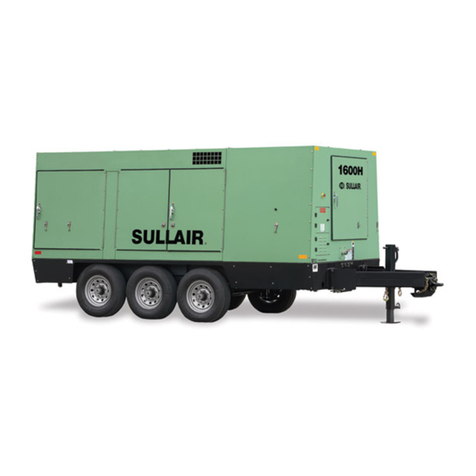Vmac G300003 User manual

Gas Engine Driven 30 CFM
Air Compressor
Installation, Owner’s and
Service Manual
G300003


VMAC –Vehicle Mounted Air Compressors
VMAC Technical Support: 1-888-241-2289
VMAC Knowledge Base: www.kb.vmacair.com
1
Gas Engine Driven 30 CFM Air
Compressor
Installation, Owner’s and Service
Manual G300003
Safety.......................................................................................................3
Warranty ..................................................................................................4
Safety Precautions..................................................................................5
General Information................................................................................9
Safety Features .......................................................................................10
Operating Principles...............................................................................11
Extreme Climates and Elevation............................................................13
System Overview ....................................................................................15
System Controls and Features..............................................................18
Installation Requirements......................................................................19
Ventilation Requirements.......................................................................20
Mounting Locations................................................................................21
Mounting the Compressor .....................................................................22
Before Starting the Gas Engine Driven 30 CFM Air Compressor .......24
Starting and Stopping the Engine.........................................................25
Recommended Accessories..................................................................30
Air Receiver Tank....................................................................................31
Setup, Performance Testing and Adjustments ....................................32
Engine rpm Adjustment..........................................................................33
Accessory Products from VMAC...........................................................34
General Maintenance Information .........................................................37
Maintenance and Repair Safety.............................................................38
Maintenance Schedule ...........................................................................41
Regular Inspection Instructions ............................................................42
200 Hour / 6 Month Service....................................................................48
400 Hour / 1 Year Service.......................................................................51
Engine Maintenance and Warranty Information...................................54
Diagnostics and Trouble Shooting........................................................55
Compressor Regulation and Throttle Actuator Testing ......................61
System Adjustment for Large Receiver Tanks.....................................68
Electrical Components and Testing......................................................69
Component Repair / Replacement.........................................................72
Illustrated Parts List ...............................................................................82
Warranty Registration ............................................................................89
Service Records......................................................................................91

VMAC –Vehicle Mounted Air Compressors
VMAC Technical Support: 1-888-241-2289
VMAC Knowledge Base: www.kb.vmacair.com
2
Document: 1930321
Changes and Revisions
Additional Application Information
•VMAC recommends installing A500044 –Cold Climate Kit if this unit will
be used in temperatures below 0 °C (32 °F).
•Refer to the Honda GX390 Owner’s Manual (VMAC P/N: 1901066) for
engine specific information.
Registered Trademarks
All trademarks mentioned in this manual are the property of their respective
owners. VMAC’s use of manufacturers’trademarks in this manual is for
identification of the products only and does not imply any affiliation to, or
endorsement of said companies.
Loctite®, Loctite®242 and Loctite®567 are registered trademarks of Henkel
AG & Company KGaA.
Honda®is a registered trademark of Honda Motor Co., Ltd.
Important Information
The information in this manual is intended for certified VMAC installers who
have been trained in installation procedures and/or for people with
mechanical trade certification who have the tools and equipment to properly
and safely perform the installation. Do not attempt this installation without the
appropriate mechanical training, knowledge and experience.
Follow all safety precautions for mechanical work. Any fabrication for correct
fit in modified vehicles must follow industry standard “best practices”.
Notice
Copyright © 2017 VMAC Global Technology Inc. All Rights Reserved. These
materials are provided by VMAC for informational purposes only, without
representation or warranty of any kind, and VMAC shall not be liable for
errors or omissions with respect to the materials. The only warranties for
VMAC products and services are those set forth in the express warranty
statements accompanying such products and services, if any, and nothing
herein shall be construed as constituting an additional warranty. Printing or
copying of any page in this document in whole or in part is only permitted for
personal use. All other use, copying or reproduction in both print and
electronic form of any part of this document without the written consent of
VMAC is prohibited. The information contained herein may be changed
without prior notice. Printed in Canada
Revision
Revision Details
Revised
by
Checked by
Implemented
Eng.
Tech.
Qual.
Mech.
Elec.
A
Initial Release
MSP
MRH
N/A
GB
AMG
21 Aug 2017
B
ECN 17-140: Fan relay update
NAC
MRH
N/A
MSP
AWG
7 Sept 2017
KEEP THIS MANUAL WITH THE GAS ENGINE
DRIVEN 30 CFM COMPRESSOR UNIT FOR
USER REFERENCE

VMAC –Vehicle Mounted Air Compressors
VMAC Technical Support: 1-888-241-2289
VMAC Knowledge Base: www.kb.vmacair.com
3
Safety
Important Safety Notice
The information contained in this manual is based on sound engineering
principles, research, extensive field experience and technical information.
Information is constantly changing with the addition of new models,
assemblies, service techniques and running OEM changes. If a discrepancy
is found in this manual, contact VMAC prior to initiating or proceeding with
installation, service or repair. Current information may clarify the issue. Any
person with knowledge of such discrepancies, who proceeds to perform
service and repair assumes all risks.
Only proven service procedures are recommended. Anyone who departs from
the specific instructions provided in this manual must first assure that their
safety and that of others is not being compromised and that there will be no
adverse effects on the operational safety or performance of the equipment.
VMAC will not be held responsible for any liability, consequential damages,
injuries, loss or damage to individuals or to equipment as a result of the
failure of any person to properly adhere to the procedures set out in this
manual or standard safety practices. Safety should be the first consideration
when performing any service operations. If there are any questions
concerning the procedures in this manual or more information is required,
please contact VMAC before beginning repairs.
Safety Messages
This manual contains various warnings, cautions and notices that must be
observed to reduce the risk of personal injury during installation, service or
repair and the possibility that improper installation, service or repair may
damage the equipment or render it unsafe.
This symbol is used to call attention to instructions concerning
personal safety. Watch for this symbol; it points out important safety
precautions, it means, “Attention, become alert! Your personal
safety is involved”. Read the message that follows and be aware of
the possibility of personal injury or death. As it is impossible to warn
of every conceivable hazard, common sense and industry standard
safety practices must be observed.
This symbol is used to call attention to instructions on a specific
procedure that if not followed may damage or reduce the useful life
of the compressor or other equipment.
This symbol is used to call attention to additional instructions or
special emphasis on a specific procedure.

VMAC –Vehicle Mounted Air Compressors
VMAC Technical Support: 1-888-241-2289
VMAC Knowledge Base: www.kb.vmacair.com
4
Warranty
VMAC Standard Warranty (Limited)
For complete warranty information, including both VMAC
Standard Warranty (Limited) and VMAC Lifetime Warranty
(Limited) requirements, please refer to our current
published warranty located at:
www.vmacair.com/warranty
If you do not have access to a computer, please contact us and we will be
happy to send you our warranty.
VMAC’s warranty is subject to change without notice.
VMAC Lifetime Warranty (Limited)
A VMAC Lifetime Limited Warranty is
offered on the base air compressor
only and only on UNDERHOOD,
Hydraulic Driven, Transmission
Mounted, Gas and Diesel Engine
Driven Air Compressors,
Multifunction Power Systems, and
other products as defined by VMAC,
provided that (i) the purchaser fully
completes and submits a warranty registration form within 3 months of
purchase, or 200 hours of operation, whichever occurs first; (ii) services are
completed in accordance with the Owner’s Manual; (iii) proof of purchase of
applicable service kits are made available to VMAC upon request.
The VMAC Lifetime Warranty is applicable to new products shipped on or
after 1 October, 2015.
Warranty Registration
The VMAC warranty registration form is located near the back of this manual.
This warranty registration form must be completed and sent to VMAC at the
time of installation for any subsequent warranty claim to be considered valid.
There are 4 ways the warranty can be registered with VMAC:
Online
www.vmacair.com/warranty
Email
Fax
(250) 740-3201
Mail
VMAC - Vehicle Mounted Air Compressors
1333 Kipp Road, Nanaimo, BC, Canada V9X 1R3

VMAC –Vehicle Mounted Air Compressors
VMAC Technical Support: 1-888-241-2289
VMAC Knowledge Base: www.kb.vmacair.com
5
Safety Precautions
As it is impossible to warn of every possible hazard that may
result from operating or servicing this system, common sense
and industry standard safety practices must be observed.
Read this information before operating the compressor for the first time.
Follow the information and procedures in this manual for operation,
maintenance and repair. Observe the following items to reduce the chance of
personal injury or equipment damage.
Follow all safety precautions for mechanical work. Moving belts and rotating
components are an extreme hazard. Stay clear of all moving parts when the
system is operating. Only qualified personnel should perform maintenance
and repair on system components and only while the system is properly shut
down.
Proper service and repair are important to the safety of the service technician
and the safe, reliable operation of the equipment. Always use genuine VMAC
and/or Honda replacement parts.
The procedures described in this service manual are effective methods of
service and repair. Some procedures may require the use of tools specially
designed for a specific purpose. Anyone using a replacement part, service
procedure or tool must first determine that neither their safety nor the safe
operation of the equipment will be compromised by the replacement part,
service procedure or tool selected.
Warning
Breathing gasoline vapours or engine exhaust can expose
you to chemicals known to the State of California to cause
cancer and birth defects or other reproductive harm.
•Always start and operate the engine in a well
ventilated area.
•If in an enclosed area, vent the exhaust to the outside.
•Do not modify or tamper with the exhaust system.
Burn Hazard
•The engine, exhaust and the compressor system get
very hot during operation, contact with the components
or the oil can cause serious injury. Allow sufficient time
for the system to cool before performing service.
•Never allow any part of your body to contact the
engine or compressor components.

VMAC –Vehicle Mounted Air Compressors
VMAC Technical Support: 1-888-241-2289
VMAC Knowledge Base: www.kb.vmacair.com
6
Personal Safety
•Do not breathe the compressor air. Vaporized oil is a
respiratory hazard.
•Do not breathe engine exhaust, gasoline engines
produce carbon monoxide, a poisonous odorless gas
which can cause death. Do not start or operate this
compressor in an enclosed area.
•Always use the appropriate personal protective
equipment, particularly eye and hearing protection
when operating air powered equipment.
Fire and Explosion Hazard
•Vaporized oil propelled by high pressure air is an
explosive mixture.
•Fire in the compressor can cause an explosion and
flame projection. Should this occur, there is potential
for serious injury or death.
•Operate the compressor in a well ventilated area free
of flammable vapors, dust, or other combustible
materials.
•Do not refuel the engine while the system is running or
hot.
•Do not refuel the engine in an enclosed space or area
with poor ventilation.
•If fuel is spilled, clean the area and wait for it to dry
before starting the engine.
•Never place objects against or on top of the
compressor.
•Never expose the WHASP Tank or compressor to
extreme heat.
Lead Acid Battery Hazard
Working near lead/acid batteries is dangerous. Batteries
may generate sulphuric acid and explosive gasses during
regular operation. Lead/acid batteries may explode if
exposed to a spark.
•Follow all safety precautions when jump starting or
charging a battery.
•Never attempt to jump start a frozen battery.
•Never overcharge a battery.

VMAC –Vehicle Mounted Air Compressors
VMAC Technical Support: 1-888-241-2289
VMAC Knowledge Base: www.kb.vmacair.com
7
Compressor Air and Oil Hazard
•The compressor system is under sufficient pressure
that a leak could force the air/oil mixture through the
skin directly into your bloodstream. This could cause
serious injury or death.
•Ensure the system is completely depressurized before
attempting maintenance or repair.
•Do not use compressed air to clean off clothing or skin,
compressed air can penetrate the skin causing serious
injury or death.
•Do not move or service the compressor while it is
pressurized or operating.
•Do not move the compressor by pulling on any hoses.
•Components and hoses under pressure could separate
suddenly, fly out and cause serious injury or death. If
equipped, the air receiver tank must be drained before
servicing any components in the compressor system.
•Never adjust or attempt to make any repairs to the
system while the engine is running. Components and
hoses under pressure could fail and cause serious
injury or death.
Burst Hazard
•Serious injury or death may result from an air tank
explosion.
•Never exceed manufacturer’s maximum air pressure
rating.
•Do not repair components, only replace with approved
parts.
•Do not tamper with or disable factory safety
equipment.
Moving Parts Hazard
•Before performing service, disconnect the negative
battery cable and the spark plug wire to prevent
unexpected engine start.
•Do not operate the compressor without guards in
place. If the guards are damaged or missing, replace
them before operating the equipment.

VMAC –Vehicle Mounted Air Compressors
VMAC Technical Support: 1-888-241-2289
VMAC Knowledge Base: www.kb.vmacair.com
8
General Warnings
•Disconnect the spark plug wire before attempting any
repair or service.
•Be attentive for unexplained changes in operation
parameters and record any changes.
•Check the compressor oil level and condition before
starting the system. Do not add or change oil while the
system is running. Use only approved oil.
•The compressor operates anytime the engine is
running. Avoid contact with the compressor, hoses, or
engine during operation.
•Keep hoses and wiring away from hot, sharp, or
moving components.
•Use only approved hoses and replacement parts.
•Do not modify the equipment.
•Do not operate the air compressor when fatigued or
under the influence of alcohol or drugs.
•Know how to operate the compressor, fully read the
manual.
•Check equipment before every use.
•Never bypass or disable any of the safety equipment.
•Never adjust or attempt to make any repairs to the
compressor system while the engine is running.
Components and hoses under pressure could fail and
cause serious injury or death.

VMAC –Vehicle Mounted Air Compressors
VMAC Technical Support: 1-888-241-2289
VMAC Knowledge Base: www.kb.vmacair.com
9
General Information
Before Starting
Read this manual as well as the Honda Owner’s Manual prior to installing or
operating the Gas Engine Driven 30 CFM Air Compressor to ensure
familiarity with the components, installation requirements and how to operate
the unit.
Open the package, unpack the components and identify them using the
included IPL on page 82.
Hose Information
The hoses used in VMAC compressor systems have a specific inner liner that
is compatible with VMAC compressor oil. Use of hoses other than those
supplied or recommended by VMAC may cause compressor damage and
may void your warranty. Please contact VMAC for replacement hoses and
further information.
Ordering Parts
To order parts, contact a VMAC dealer. The dealer will ask for the VMAC
serial number, part number, description and quantity. Locate the nearest
dealer online at www.vmacair.com/dealer-locator or call 1-877-912-6605.

VMAC –Vehicle Mounted Air Compressors
VMAC Technical Support: 1-888-241-2289
VMAC Knowledge Base: www.kb.vmacair.com
10
Safety Features
Do not disable or bypass any safety components. Disabling
or bypassing safety components could result in equipment
damage, injury or death.
Read this manual in its entirety prior to operating or
performing any service or repairs to the Gas Engine Driven
30 CFM Air Compressor.
Gas Engine Driven 30 CFM Air Compressor
Safety Components
•200 psi pressure relief valve in the separation manifold.
•Blowdown muffler to discharge system pressure on shut down.
•Temperature safety switch in compressor.
•15 A fuse protects the OEM electrical system (located inside the
OEM key start enclosure).
•15 A fuse protects the fan’s electrical system (located in the wiring
harness next to the battery).
Figure 1 –Safety components (Shroud removed for clarity)
Automatic Overheat Shut down
If the compressor oil temperature exceeds 140 °C (284 °F), the thermostatic
switch will disable the engine. The cooling fan is powered by the battery and
will continue to run as needed to cool the compressor.
The engine will not be able to be restarted until the system has
cooled and the temperature switch has closed.
Temperature
switch
200 psi relief
valve
Blowdown
muffler

VMAC –Vehicle Mounted Air Compressors
VMAC Technical Support: 1-888-241-2289
VMAC Knowledge Base: www.kb.vmacair.com
11
Operating Principles
Air Compression
The Gas Engine Driven 30 CFM Air Compressor uses a VMAC designed and
manufactured flooded lobe, rotary screw compressor. The oil filled
compressor housing contains 2 rotors. Compression occurs when air (at
normal atmospheric pressure) enters a chamber where it is trapped between
meshing rotor lobes. Cooled oil is injected into the rotors during compression
to lubricate the rotors and bearings, absorb the heat of compression, and seal
the rotor lobes to allow for efficient compression. As the rotors rotate, the
meshing lobes compress the volume of the trapped air/oil mixture before
sending it down the discharge line to be cooled and separated by the Waste
Heat Air Separation Package (WHASP) Tank.
Oil Separation and Cooling
The WHASP Tank is a 2 stage air/oil separator and oil cooler. The hot air/oil
mixture from the compressor enters the cooler at the top of the WHASP Tank
where the mixture is cooled and the majority of the oil separates from the air
and settles into the reservoir tank below the cooler (first stage separation).
The cooled oil then passes through a high pressure oil filter before being
returned to the compressor via the oil return line. The air stream then passes
through a coalescing filter where the remaining oil is removed (second stage
separation). The oil collected by the coalescing filter is returned to the
compressor via the 1/4 in PTFE scavenge tube.
A liquid to air cooler with electric fan maintains the operating temperature
which reduces the temperature of the compressed air and increases the
system’s durability.
Minimum Pressure Check Valve
The WHASP Tank has a built-in minimum pressure check valve (MPCV) to
maintain a minimum pressure of approximately 60 psi (414 kPa) in the
WHASP Tank, this ensures there is adequate compressor lubrication, cooling,
and oil separation in the coalescing filter. Air will not flow out of the WHASP
Tank until approximately 60 psi is reached. The MPCV is factory set and
requires no adjustment or servicing.
The VMAC WHASP Tank has a built-in check valve. Use of
an additional check valve is not required and may cause
erratic performance.

VMAC –Vehicle Mounted Air Compressors
VMAC Technical Support: 1-888-241-2289
VMAC Knowledge Base: www.kb.vmacair.com
12
Filtration
VMAC rotary screw compressors are designed and machined to exacting
tolerances. Foreign particles entering the compressor can damage system
components such as seals, bearings, rotors, as well as the inside of the
housing, resulting in performance losses and reduced system life.
The system is equipped with a replaceable paper element inlet air filter, spin
on high pressure oil filter and a spin on coalescing filter.
These system filters enhance performance and extend component life by
reducing damage from dust and other debris. Proper maintenance is required
to maintain system performance and extend the system’s life.
Compressor Drive, Belt and Tensioning
The compressor is directly driven by a 4 rib belt. Anytime the engine is
running the compressor is running. The system has an automatic belt
tensioner, manual adjustment is not required.
Pressure Regulation
Pressure regulation is achieved with a combination of an inlet valve regulator,
a mechanical unloader valve and a discharge valve. Use a Filter Regulator
Lubricator (FRL) to regulate downstream pressure to the tools.
System Pressure Unload
Internal system pressure is controlled via a mechanical unloader valve. When
downstream air pressure reaches 150psi (air pressure to the air tools), the
mechanical unloader valve activates and sends a signal to the mechanical
discharge valve to open. When open, the mechanical discharge valve sends
internal system pressure (pressure inside the compressor and WHASP Tank)
to the inlet valve and closes the compressor air intake poppet. Internal air
pressure is then vented to a nominal value which reduces the load on the
engine. This allows the control system to reduce engine speed which
improves fuel efficiency, as well as reducing emissions and wear and tear on
the system. When downstream pressure drops below 120 psi, the unloader
valve will close and “load” the system, allowing it to build air.
Engine Speed Control
The engine speed is controlled mechanically by a pneumatic throttle which
raises and lowers engine rpm according to air demand. Operator input is not
required on the throttle lever.
Spark Arrester
The gas engine is supplied with a spark arrester.
For more information regarding the spark arrester, refer to the Honda GX390
Owner’s Manual supplied with the system (VMAC P/N: 1901066).

VMAC –Vehicle Mounted Air Compressors
VMAC Technical Support: 1-888-241-2289
VMAC Knowledge Base: www.kb.vmacair.com
13
Extreme Climates and Elevation
The Gas Engine Driven 30 CFM Air Compressor has been
designed to operate in moderate climates of 0 °C to +40 °C
(32 °F to +104 °F) and at elevations below 3,500 feet.
Operating outside of this range may result in performance
issues with the engine and compressor.
Cold Environment Operation
The Gas Engine Driven 30 CFM Air Compressor system is not
designed or recommended for use in cold climates (below 0 °C /
32 °F) unless equipped with a VMAC cold climate kit
(P/N: A500044).
Cold Environment Recommendations
Ensure the following conditions are met before starting the compressor:
•Use the choke in cold environments, or for first start of the engine.
•The system’s components must all be at, or above 0 °C (32 °F). Starting
the system while any of the components are below 0 °C (32 °F) may
result in excessive engine cranking while starting, the engine failing to
start, belt slippage, and engine stalling. Use the optional A500044 Cold
Climate Kit or store the system indoors and start it while the components
are still warm.
•For engine oil recommendations in temperatures below 0 °C (32 °F),
refer to the Honda Owner’s Manual supplied with the system. Failure to
follow the recommendations in the Honda Owner’s Manual may result in
poor engine performance or engine damage.
•The unloader valve should be manually activated to aid start up; this will
reduce the load on the compressor, resulting in less load on the engine
during warm up (Figure 2).
While the unloader valve is manually opened, the compressor
will only produce approximately 40 psi. Once the engine has
reached normal operating temperature, close the unloader
valve to allow the system to build to full system pressure.
The optional A500044 Cold Climate Kit is a starting aid only.
Contact a Honda dealer for recommendations when operating
the engine below -15 °C (5 °F).
Figure 2 –Unloader valve
Unloader valve
with manual
unload actuator

VMAC –Vehicle Mounted Air Compressors
VMAC Technical Support: 1-888-241-2289
VMAC Knowledge Base: www.kb.vmacair.com
14
Hot Environment Operation
Operating the Gas Engine Driven 30 CFM Air Compressor fully loaded for
extended periods in temperatures above 40 °C (104 °F) may result in the
system shutting down due to the compressor oil overheating. Placing high
demand on the engine (e.g. continuous demand @ 145 psi) for extended
periods can also result in higher than normal engine oil temperatures. To
avoid overheating the engine or compressor, VMAC recommends installing
an air receiver tank. This will help to reduce the duty cycle of the compressor
by allowing it to unload.
The compressor system is protected by a compressor oil temperature switch
that opens at 140 °C (284 °F) and shuts down and disables the engine until
the compressor oil temperature drops below 139 °C (282 °F). The cooling fan
will continue to operate at anytime as it is powered directly from the battery.
If the Gas Engine Driven 30 CFM Air Compressor shuts off due to overheat,
allow the system to cool sufficiently before restarting.
For engine oil recommendations in temperatures above 40 °C (104 °F) refer
to the Honda GX390 Owner’s Manual supplied with the system (VMAC P/N:
1901066). Failure to follow the information supplied in the Honda Owner’s
Manual may result in poor engine performance or engine damage.
Hot Environment Recommendations:
•Ensure there is an adequate supply of cool ambient air to the unit.
•Ensure the exhaust and hot air are able to vent from the system with no
restrictions.
•Ensure the WHASP radiator fins and engine recoil starter areas are
clear of debris.
•Install an external fan to direct cool air toward the engine and air
compressor.
•Ensure the engine and compressor are serviced at correct intervals.
A receiver tank can help prevent overheating issues by
lowering the duty cycle of the compressor.
High Altitude operation
The Gas Engine Driven 30 CFM Air Compressor has been designed to
operate from 0 to 3,500 feet above sea level.
Operation above 3,500 feet may limit the compressor performance and may
cause the engine to stall. For operation between 3,500 and 5,000 feet,
lowering the compressor duty cycle is recommended.
For more information regarding high altitude operation refer to the Honda
GX390 Owner’s Manual supplied with the system. (VMAC P/N: 1901066).
Failure to follow the Honda Owner’s Manual may result in poor engine
performance or engine damage.
Engines modified for high altitude operation must be returned
to original factory specifications prior to use below 5,000 feet
to prevent serious engine damage.

VMAC –Vehicle Mounted Air Compressors
VMAC Technical Support: 1-888-241-2289
VMAC Knowledge Base: www.kb.vmacair.com
15
System Overview
The serial number is located near the top of the belt guard. Have this number
ready when registering the warranty, ordering parts, or when calling in for
technical support (Figure 3).
Figure 3 –Serial number plate and location
Support and Parts
To order parts, contact a local dealer or contact the sales
team.
Dealer locator: http://www.vmacair.com/dealer-locator/
Toll free: 1-(800) 738-8622
Email: [email protected].
For technical support visit VMAC’s Knowledge Base or
contact the technical support team.
Knowledge Base: http://kb.vmacair.com/
Toll free: 1-(888) 241- 2289
Email: [email protected]
Serial number plate

VMAC –Vehicle Mounted Air Compressors
VMAC Technical Support: 1-888-241-2289
VMAC Knowledge Base: www.kb.vmacair.com
16
The compressor is driven by a belt; any time that the engine is
running, the compressor is being driven.
System Components (Front)
•WHASP Tank
•Rotary screw compressor
•Key start
•Hour meter
•12 V battery
•Honda GX390 gasoline engine
•Unloader valve
•Discharge valve
Figure 4 –System overview (Shroud removed for clarity)
Engine
Compressor
WHASP Tank
Hour meter
Key start
Battery
Unloader
valve
Discharge
valve

VMAC –Vehicle Mounted Air Compressors
VMAC Technical Support: 1-888-241-2289
VMAC Knowledge Base: www.kb.vmacair.com
17
System Components (Back)
•Lifting eye
•Belt shroud
•Fuel fill
•Exhaust shroud
Figure 5 –System overview
Lifting eye
Fuel fill
Belt shroud
Exhaust shroud

VMAC –Vehicle Mounted Air Compressors
VMAC Technical Support: 1-888-241-2289
VMAC Knowledge Base: www.kb.vmacair.com
18
System Controls and Features
The Gas Engine Driven 30 CFM Air Compressor includes the following
controls and features (Figure 6):
•Electric key start with recoil pull start backup.
•Manual choke.
•Compressor overtemperature switch (shuts down the engine).
•Intelligent throttle which increases or decreases engine rpm based on air
demand (reduces fuel consumption when no air is needed).
•Automatic system pressure unload with manual override (when the
system is “unloaded”, engine speed can be reduced, decreasing engine
noise, emissions and wear and tear, while increasing fuel efficiency).
•Hour meter (runs any time the engine is running).
•Automatic blowdown (depressurizes the system when it is shut down).
The electric fan on the WHASP Tank can turn on at any time.
This is normal operation.
Figure 6 –System controls overview
Choke
Fuel shut
off
Hour meter
Key start
Unloader
valve
Recoil
pull start
Table of contents
Other Vmac Air Compressor manuals
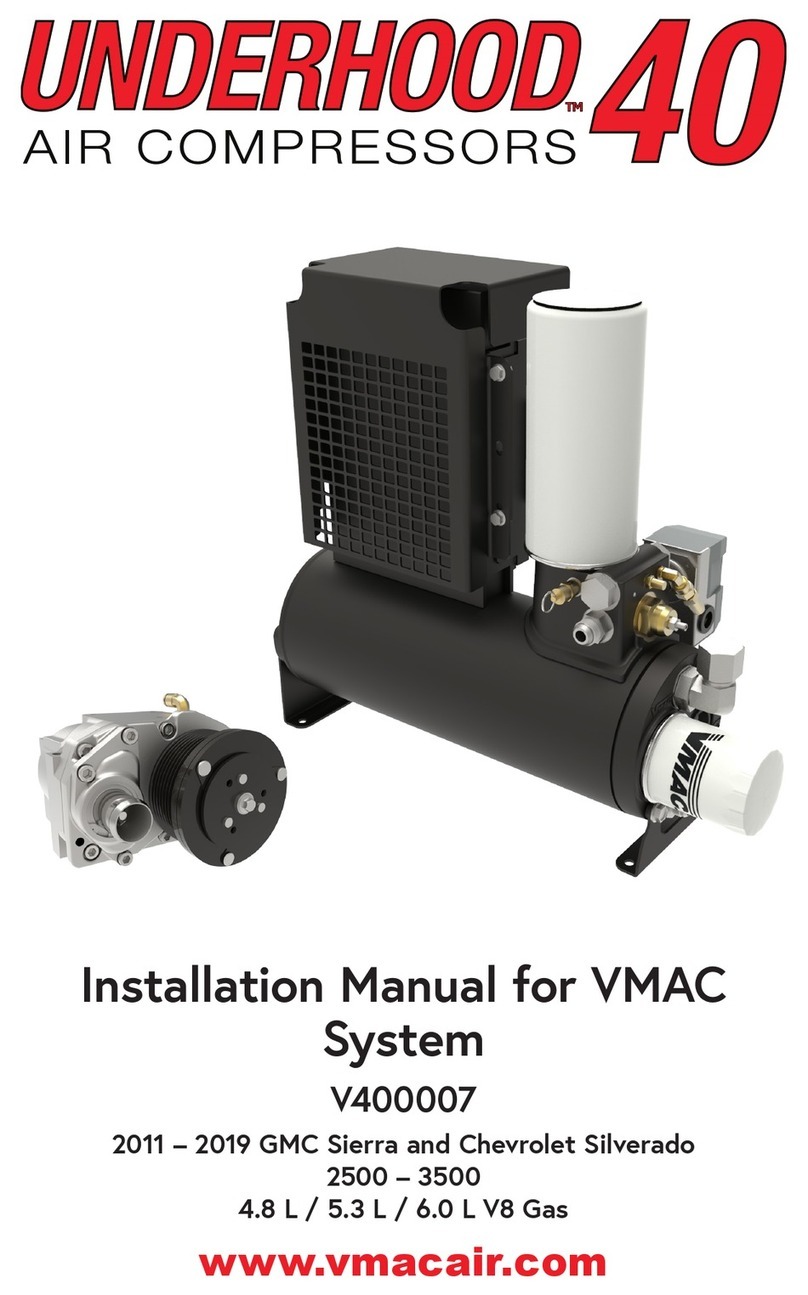
Vmac
Vmac V400007 User manual

Vmac
Vmac VR70 User manual

Vmac
Vmac RAPTAIR60 Manual
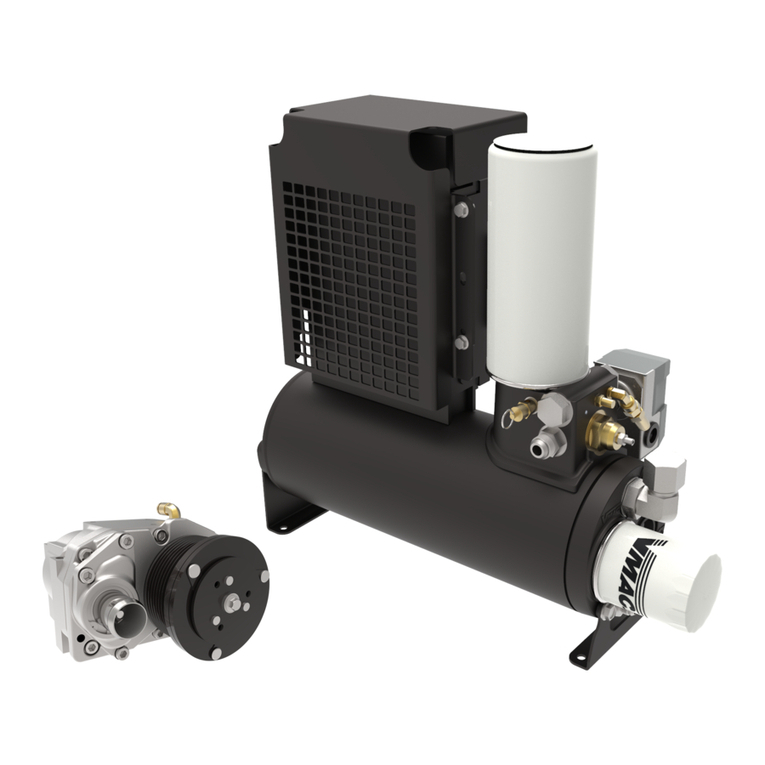
Vmac
Vmac UNDERHOOD 40 Series User manual
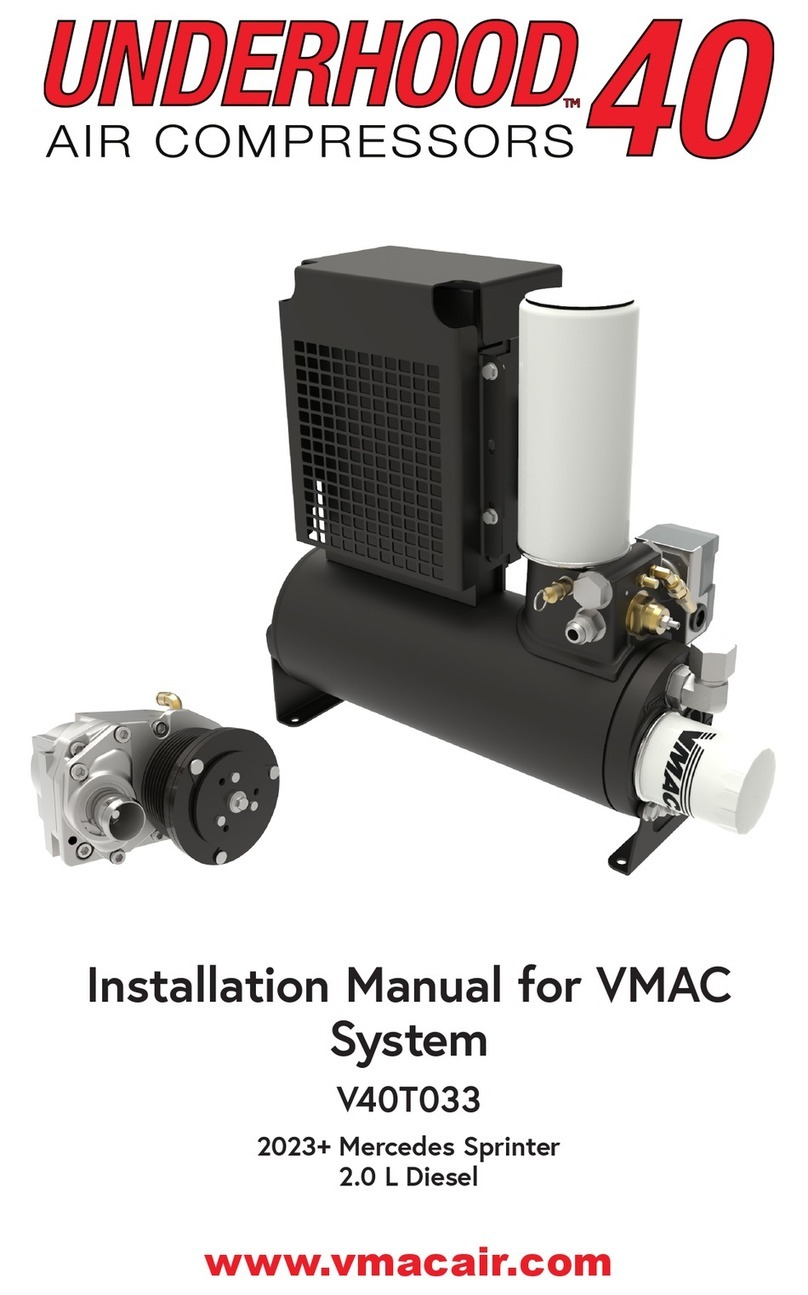
Vmac
Vmac UNDERHOOD 40 Series User manual

Vmac
Vmac UNDERHOOD 40 Series User manual
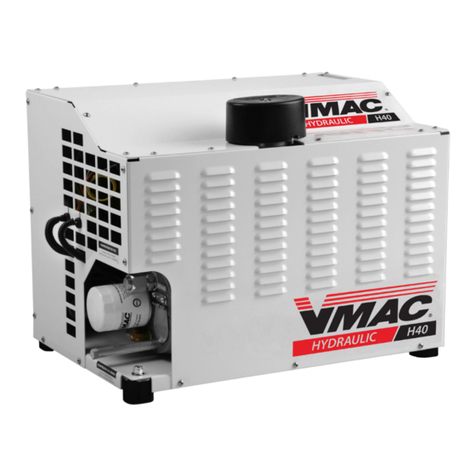
Vmac
Vmac H400011 User manual
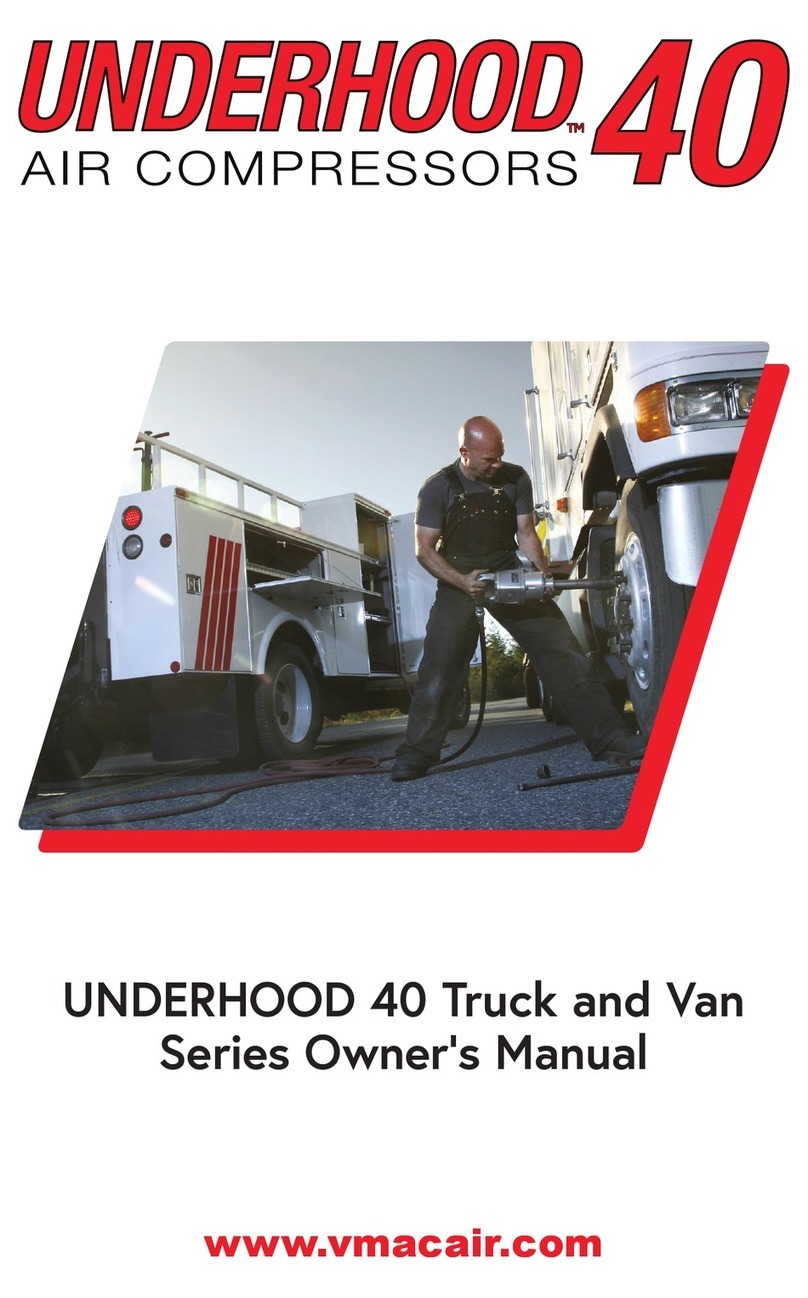
Vmac
Vmac UNDERHOOD 40 Series User manual

Vmac
Vmac VR70 User manual

Vmac
Vmac PREDATAIR Installation instructions
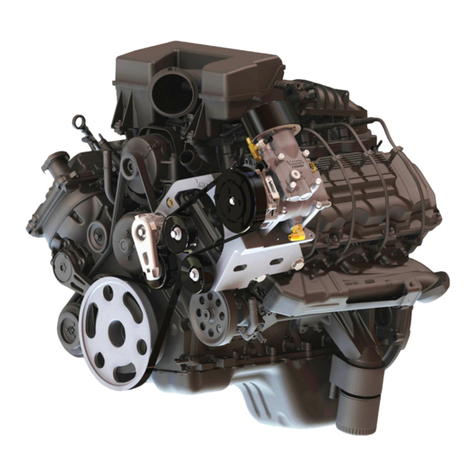
Vmac
Vmac VR70 User manual

Vmac
Vmac DM00030 User manual

Vmac
Vmac UNDERHOOD 40 Series User manual

Vmac
Vmac DM2A021 User manual
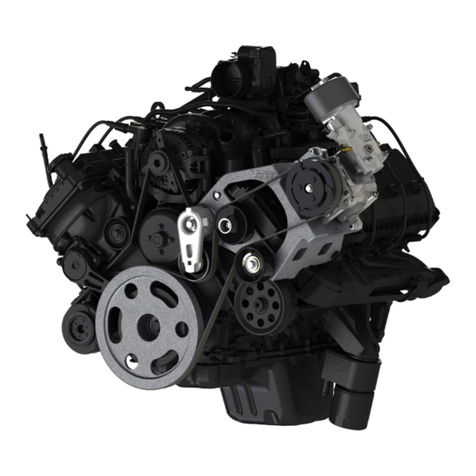
Vmac
Vmac V900140 User manual
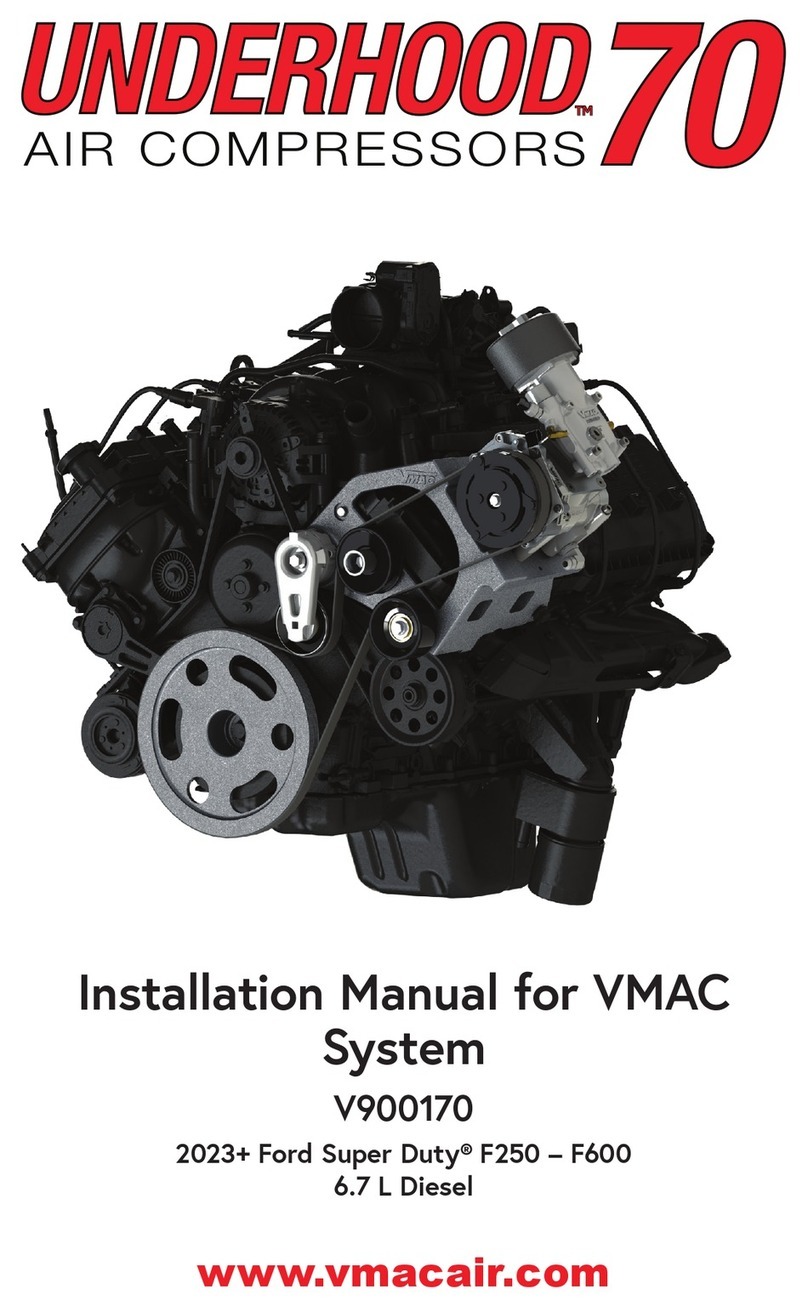
Vmac
Vmac V900170 User manual

Vmac
Vmac UNDERHOOD 40 Series User manual

Vmac
Vmac VR70 User manual
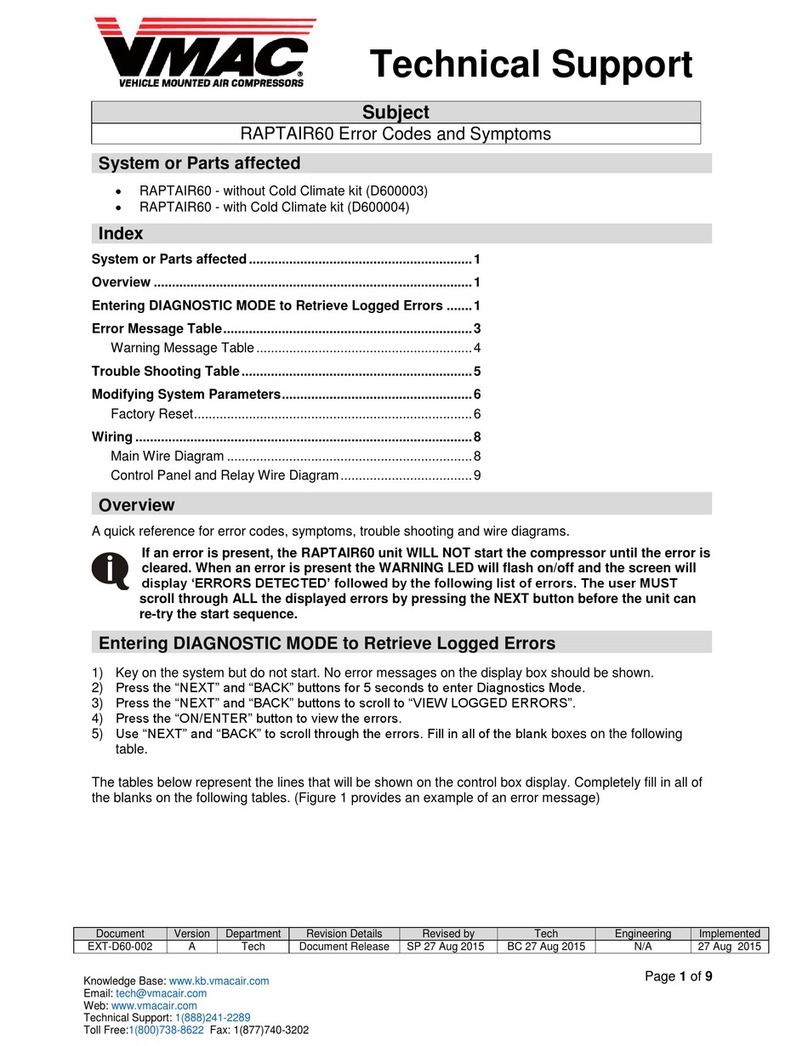
Vmac
Vmac RAPTAIR60 Installation instructions
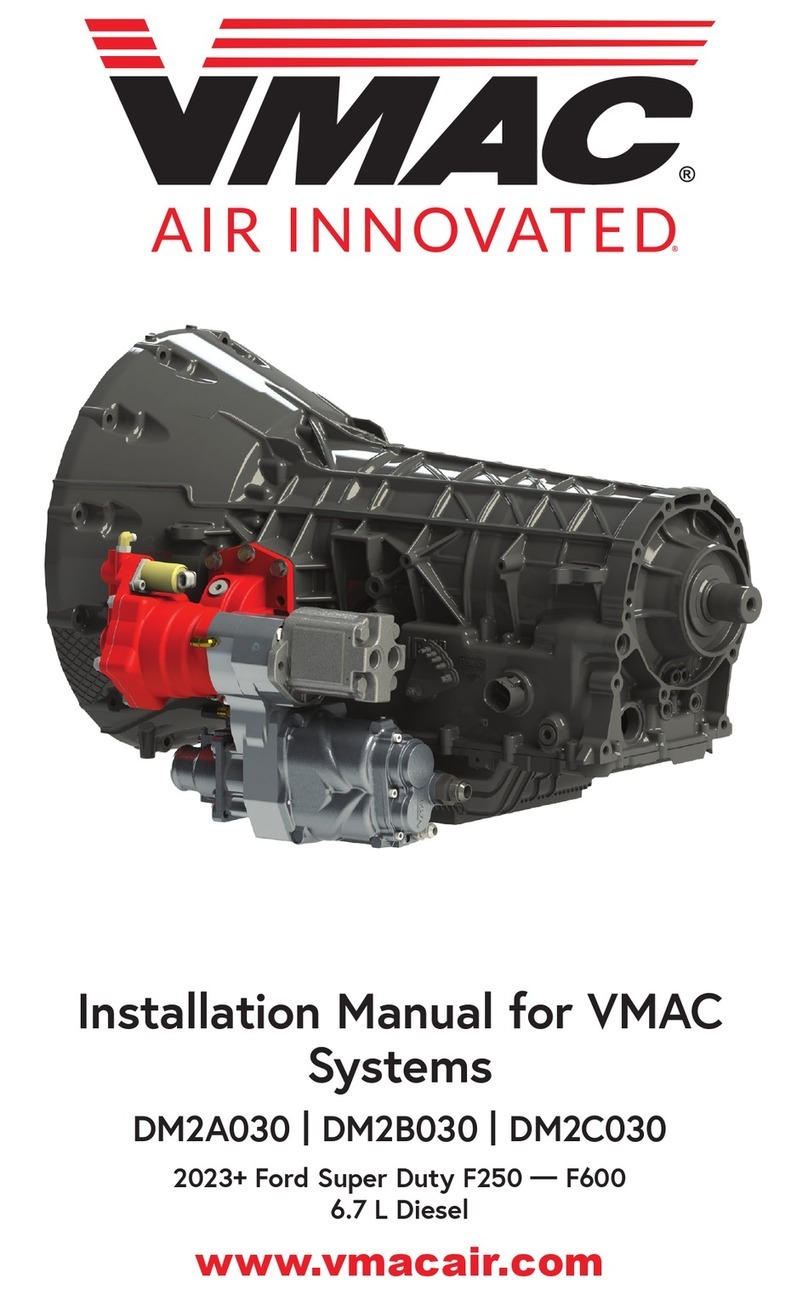
Vmac
Vmac DM2A030 User manual
